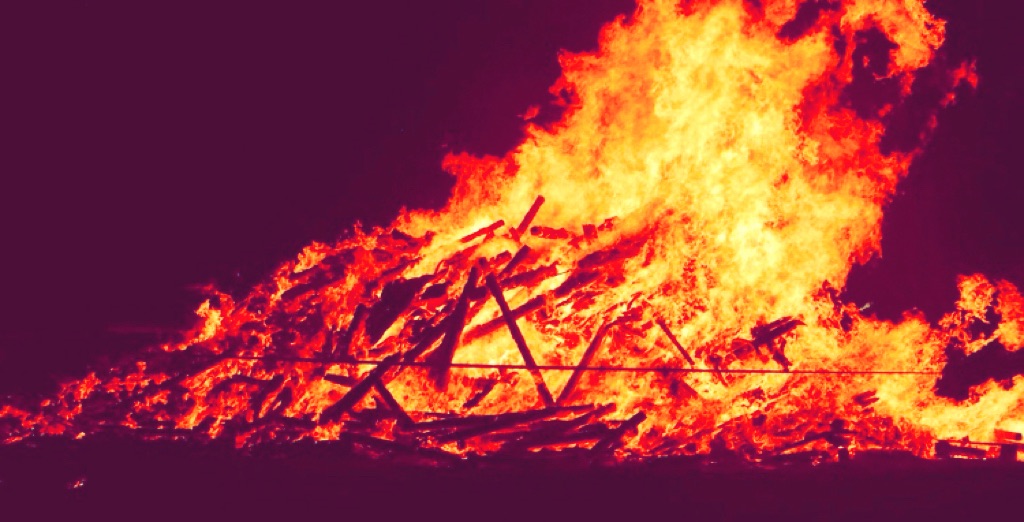In 1634, a convent of Ursuline nuns in the French kingdom of Loudun claimed they had been visited and possessed by demons.
After an investigation by the Catholic church, a priest named Father Urbain Grandier was accused of summoning the demons and sentenced to be burned to death at the stake.
This case “rhymes” with that discussed in part II.
At that time, King Louis the 13th was trying to destroy the walls and fortifications around Loudun, which the Huguenots (or Protestants) were increasingly unhappy about. The Catholics, however, supported the King. Also, an outbreak of plague took place in 1632, killing many people, so the general atmosphere was one of dread and division.
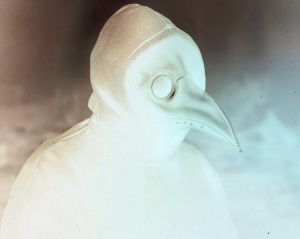
Urbain Grandier was thought to be an attractive, rich, and well-educated man. He was an eloquent and popular preacher, and all of this made the local monks envious of him. He was in favour of keeping the walls around Loudun.
Many folks believed Urbain Grandier had sired a son with Philippa Trincant, the daughter of his friend, Louis Trincant who was the King’s prosecutor in Loudun. Grandier had provoked the outrage of a few husbands and fathers, some of them rather influential people, by the relations he’d indulged in with the female members of their families.
Around the year 1629, Jacques de Thibault, (who was probably related to Philippa) outspokenly announced his opinion on Urbain’s behaviour concerning women. When Urbain Grandier asked him for an explanation, the man pummelled him with a cane outside the Church of Sainte-Croix. During the resulting trial, Thibault made certain charges against Grandier in defence, which led the magistrates to turn Father Grandier over to the ecclesiastical court.
After this, the Bishop forbade Grandier from working as a priest for five years in the Diocese of Poitiers, and forbade him from working as a priest in Loudun forever. Grandier appealed to the court at Poitiers, a number of witnesses withdrew their statements, and the case was dismissed.
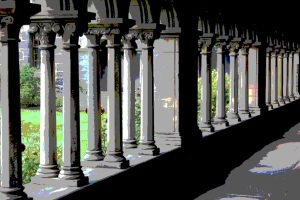
Loudun’s Ursuline convent was opened in 1626. In 1632, the prioress, Jeanne des Anges, was in charge of seventeen nuns, most of them around twenty-five years old. The first reports of demonic possession started five months after the plague outbreak in 1632, just as it was abating. Doctors and property owners had left the town and others had isolated themselves. The convents had shut to visitors.
Father Grandier visited the sick and gave money to the poor.
A young nun claimed to have had a vision of her late confessor, Father Moussant. Soon after that, other nuns said they experienced similar visions. Canon Jean Mignon, the convent chaplain who was also Trincant’s nephew, decided to exorcise the nuns. In the town, common folk were saying that the visions were fake.
The nuns made out that the demon “Asmodai” had been sent to do evil and inappropriate acts with them. During interrogations concerning the evil spirit possessing them, the nuns supplied different names as to who had caused Asmodai’s visit: a priest, Peter, and “Zabulon.”
After almost a week, on October the 11th, Grandier was named as the magician who had summoned the demon, though none of the nuns ever met him.

Physicians and apothecaries were brought in and Canon Mignon told the local magistrates of the occurrences at the convent.
Father Grandier filed a petition saying his reputation was under attack and that the nuns should be confined. The Archbishop of Bordeaux ordered that the nuns be sequestered.
The appearances of possession seemed to disappear for a while, but they came back.
The nuns’ increasingly bizarre behavior (shouting, swearing, barking) attracted a large amount of spectators.
Cardinal Richelieu intervened. Father Grandier had already offended Richelieu by publicly disagreeing to the destroying of Loudun’s walls, and his reputation for “relations” with female parishioners didn’t help him get into the cardinal’s good books at all. Not only that, but Father Grandier had written a book attacking the idea of clerical celibacy as well as a satire of Cardinal Richelieu.

In November 1633, a man named Jean de Laubardemont was put in charge of investigating the possessed nuns. Father Grandier was arrested to stop him fleeing the town.
Jean then took statements from witnesses, who said that Urbain Grandier mysteriously appeared at the convent at all hours, although nobody could work out how he was able to gain entrance. Grandier was accused of all kinds of indecent behaviour.
Jean then questioned Urbain, and after making him sign his statement and denials, travelled to Paris to inform the Court there. Letters from Grandier’s main supporter, the Bailly of Loudun, to the Procurator-General of Parlement, which insisted that the nuns’ possessions were not genuine, were intercepted.
Jean de Laubardemont returned to Loudun with a Decree forbidding Parlement and all other judges from interfering in the case, and forbidding all the people concerned from appealing, under the penalty of a fine of 500 livres. Urbain Grandier, who had been incarcerated in the prison at Angers, was brought back to Loudun. Once again, Laubardemont observed and questioned the nuns, who had now been disbanded into a few different convents.
The Bishop of Poitiers sent several Doctors of Theology to examine the nuns and journeyed to Loudun in person. Over the next two and half months, he performed exorcisms on the young women.
On June the 23rd, 1634, Urbain Grandier was escorted from prison to the Church of St. Croix to be present at the exorcisms. As he and his partisans kept saying the possessions were fake, Grandier himself was ordered to be the exorcist. He couldn’t refuse.
He took the stole they offered to him, received the pastoral benediction, and after they had sung the Veni Creator, he commenced with the exorcism in its usual form.
In August 1634, the case was heard before local magistrates. It was alleged that Grandier had made a deal with the devil and invited somebody to a witches’ sabbat.
Urbain Grandier was found guilty of magic, maleficia, and casting evil spells to cause the possession of the nuns and other women in Loudun.
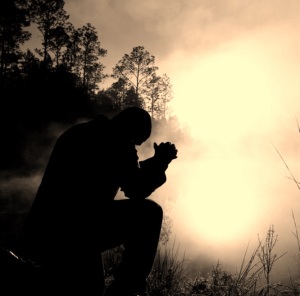
Grandier was sentenced to make “amende honorable”: kneeling with his head bare, a rope around his neck, holding a burning taper weighing two pounds, in front of the main door of the churches of St. Pierre-du-Marché, and St. Ursula, to ask for the forgiveness of God, the King, and the law. Then he was to be taken to the public square at St. Croix, and tied to a stake on a scaffold and burned alive, his ashes scattered to the winds.
His property would be confiscated by the King, and 500 livres would be spent on a bronze plaque detailing what had happened and hung in the Ursuline church.
Before going to his execution, Grandier had to be tortured to find out the names of his accomplices. One of the things he was subjected to was The Boot, a device for slowly crushing the lower leg.
Urbain Grandier was taken to the Court of Justice in Loudun. His sentence was read out to him and he begged Jean de Laubardemont and the other Commissioners to lessen the cruelty of it. De Laubardemont said the only way to persuade the judges to mitigate the sentence was to declare who his accomplices were straight away. Grandier replied that he had no accomplices.
Urbain Grandier was promised a chance to speak and make his last words heard before his execution, and that he’d at least be hanged before his burning.
Grandier did attempt to address the crowds from the scaffold, but the monks threw vast amounts of holy water in his face so his last statement wasn’t audible. Then an exorcist named Lactance, angered by the taunting from the crowd, lit the funeral pyre before Father Grandier could be hanged.
The executioner tried to approach to strangle him, as was usually done, but the flames leaped up with such vehemence that the rope caught alight and Grandier fell, still alive, amongst the burning wood.
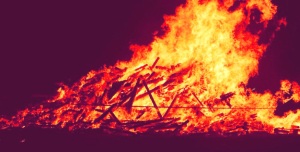
The possessions didn’t cease for three years after Father Grandier’s death. Public exorcisms continued.
In 1637, the last departing demons left signs of their exit from Jeanne des Anges, the Mother Superior, when the names of Joseph and Mary appeared “written” on her left arm (a supernatural phenomenon known as dermatographism).
